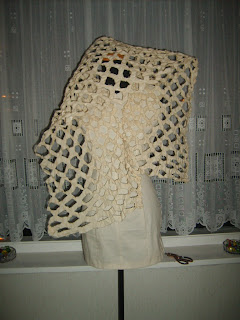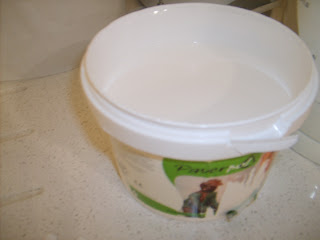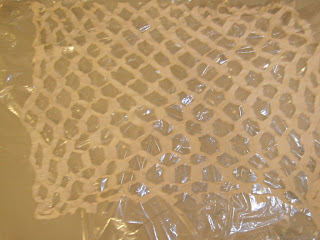Sunday, 30 October 2011
I decided that though it is a fashion sculpture i have been asked to create I still want it to be wearable. The paverpol solution made the fabric rough which irratates the skin so I had to make a fitted dress to go underneath. I kept it simple so it wouldnt take take away from the sculpture.
I made the fitted dress straight off the mankin. I first marked out the dress on the mankin using tape, I then pinned fabric onto the mankin and traced off the shapes. I traced off the fabric onto paper, added seam allowence and I then cut the peices out onto fabric. I finally sew it all together and it fit perfectly.
I made the fitted dress straight off the mankin. I first marked out the dress on the mankin using tape, I then pinned fabric onto the mankin and traced off the shapes. I traced off the fabric onto paper, added seam allowence and I then cut the peices out onto fabric. I finally sew it all together and it fit perfectly.
Saturday, 29 October 2011
I did this sample by folding fabric like you would do for a fan and cutting slits on one side cross the fabric about one inch apart and then on the other side in between the other slits and when opening it, it opened into a sort of honeycomb structure I loved it and decided to develop it more to see what else I could do with this technique.
sheering elastic
I put sheering elastic onto the bobbin instead of normal thread, I then stretched a piece of fabric on an embroidery hoop. I stitched on hexagons using an embroidery foot. I wanted the hexagons to lift up to create a 3d effect but when I took the fabric off the embroidery hoop it gathered the fabric together which left circles on the fabric the sample wasn’t very successful.
Pin tucking
For this sample I put two pieces of fabric together, stitched onto the fabric using a zig zag stitch and I then cut out in middle of the stitching. I liked this sample but I think it would be more effective if the shapes were smaller and if there were more of them.
Knitting
I knitted this piece using wide knitting needles which left holes and gave it an honeycomb effect but wasn’t quite so structured so I decided to dip it in wax [batik] which gave it strength and structure and when the wax cooled it left hard white bits on the wool I liked this effect.
Derek Lawlor AW11 Collection
| Joanne Haywood |
Weaving
For this sample I stuck down strips of wool in straight lines horizontally I then got more wool and weaved it in and out vertically this created the weave I liked the look of it but it wasn’t very secure and structured.
| Paper textiles Sophie Roet 2004 |
Couching
| Gerhard Knodel |
For this sample I put wadding in between two pieces of fabric and stuck them together using bondaweb. I then cut out hexagonal shapes onto the fabric using a scalpel leaving one side attached. The sample was quite successful but wasn’t very neat because the fabric was stiff so it was hard to cut out. This saple reminded me of the picture above.
Expandex
For this expandex sample I experimented with different textures by applying the expandex in different ways I learned that leaving the heat gun on for too long caused the fabric to burn so if I was to use this technique I would have to consider how long I keep the heat gun on the fabric and which fabrics are suitable for this.
 |
1. Bubble dress, Hussein Chalayan/ 2. P-wall, Andre Kudless |

These samples were taken from the outside of a beehive. I did this sample by applying expandex to fabric in wavy and straight lines using a paint brush I then applied heat using a heat gun which caused the expandex to dry and expand on the fabric. I liked how the expandex was uneven it made it look more real.

quilting
I did this quilting sample by sandwiching a piece of wadding in between two piece of fabric using bondaweb this made the fabric hold together while I stitched on a honeycomb pattern. I did the stitching free hand using an embroidery foot. I like how the sample turned out it gave the fabric a spongy and bumpy texture which portrays a honeycomb well.
Subscribe to:
Comments (Atom)































